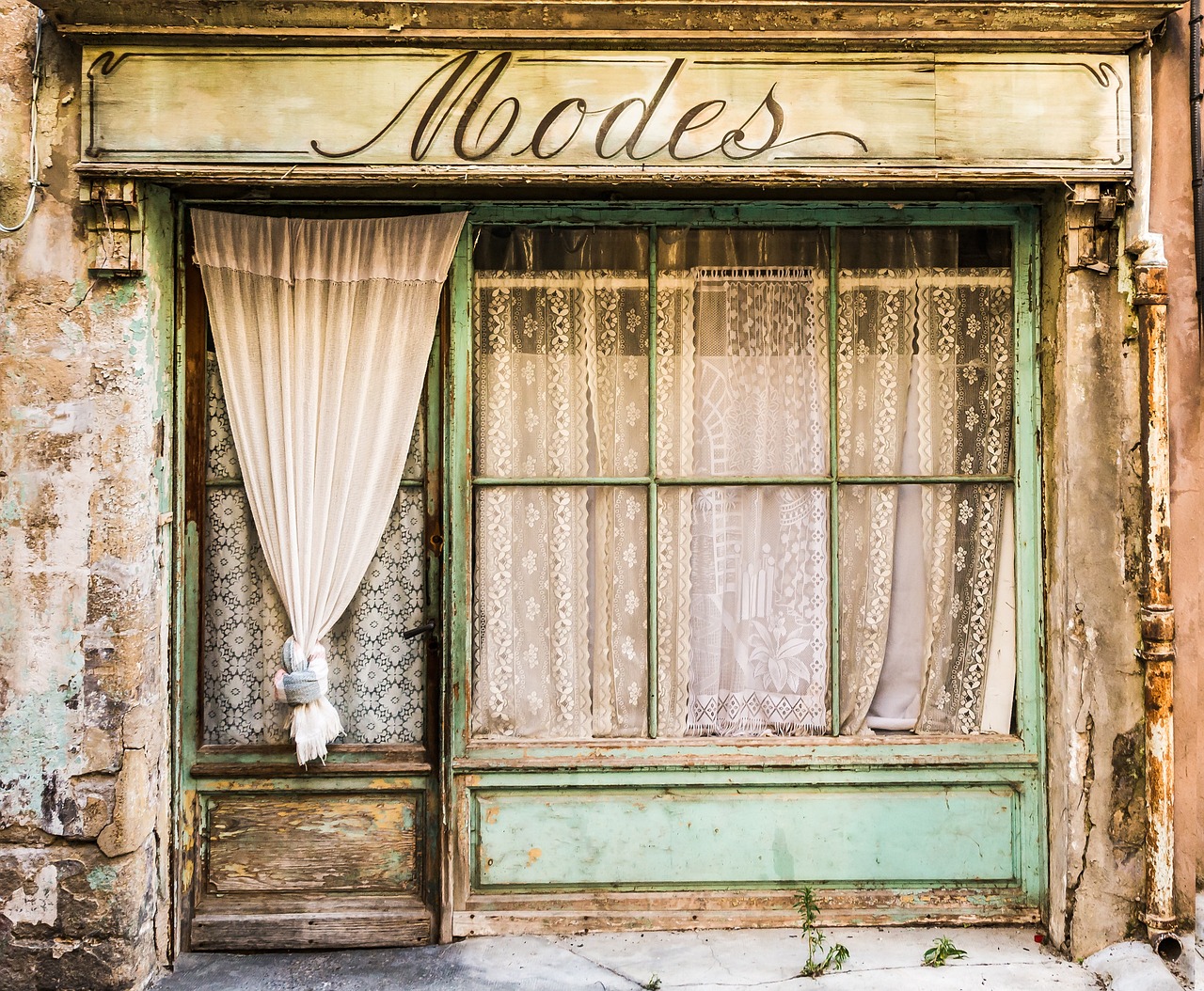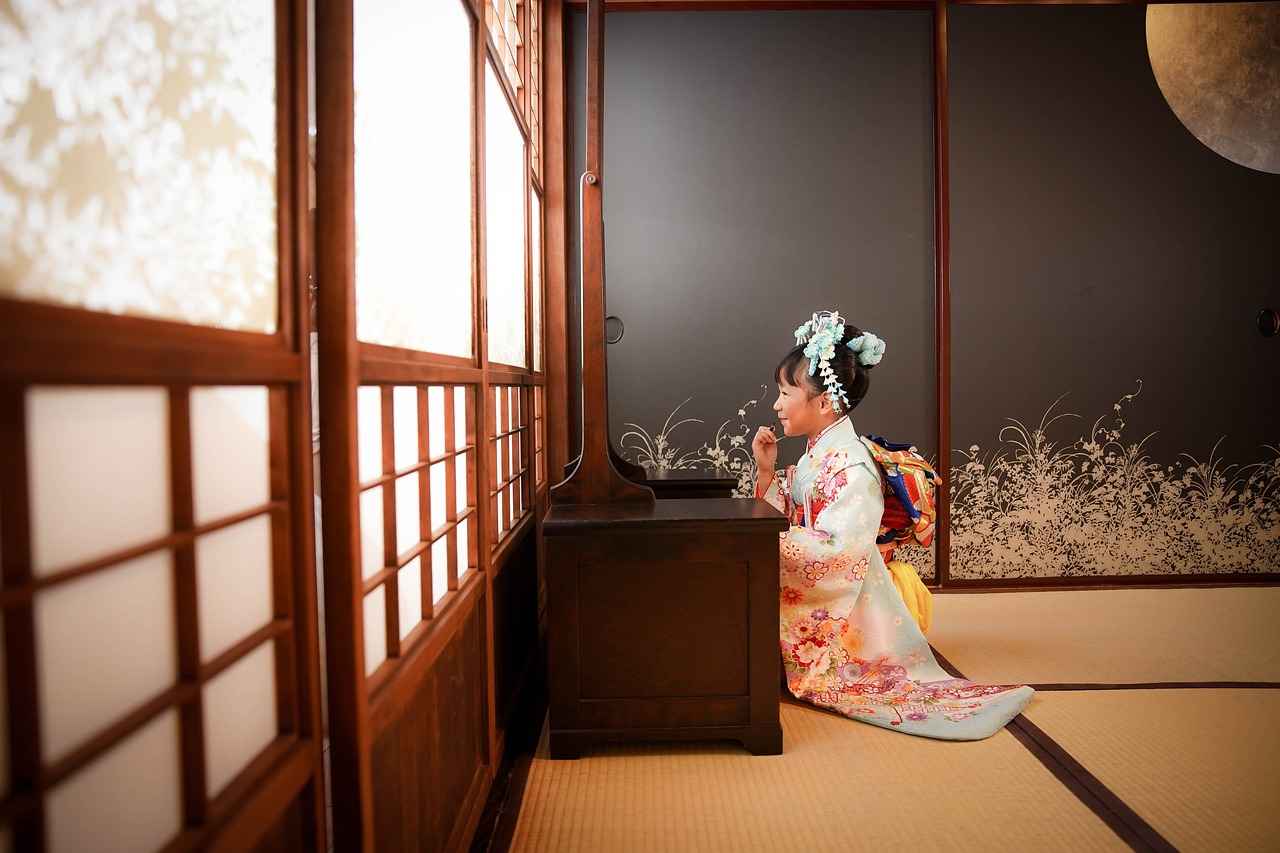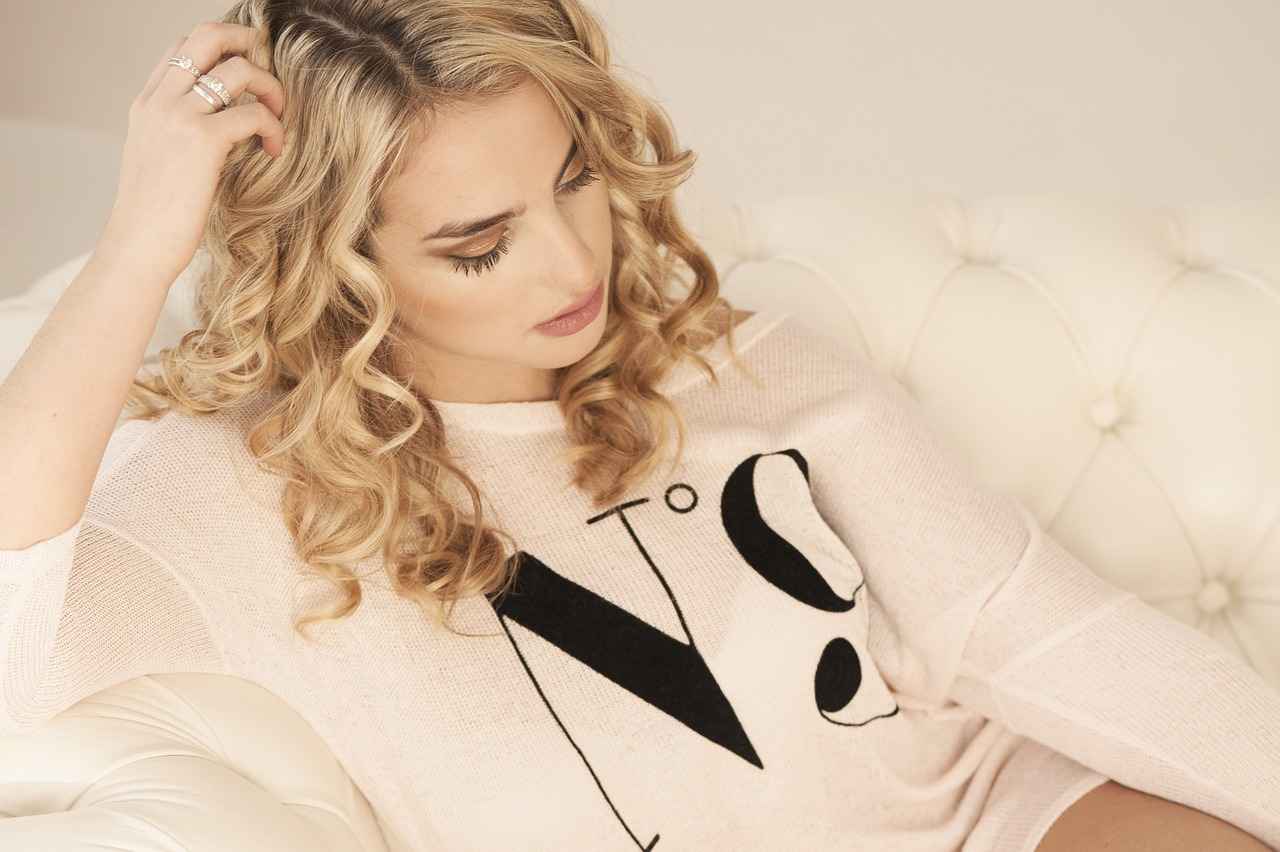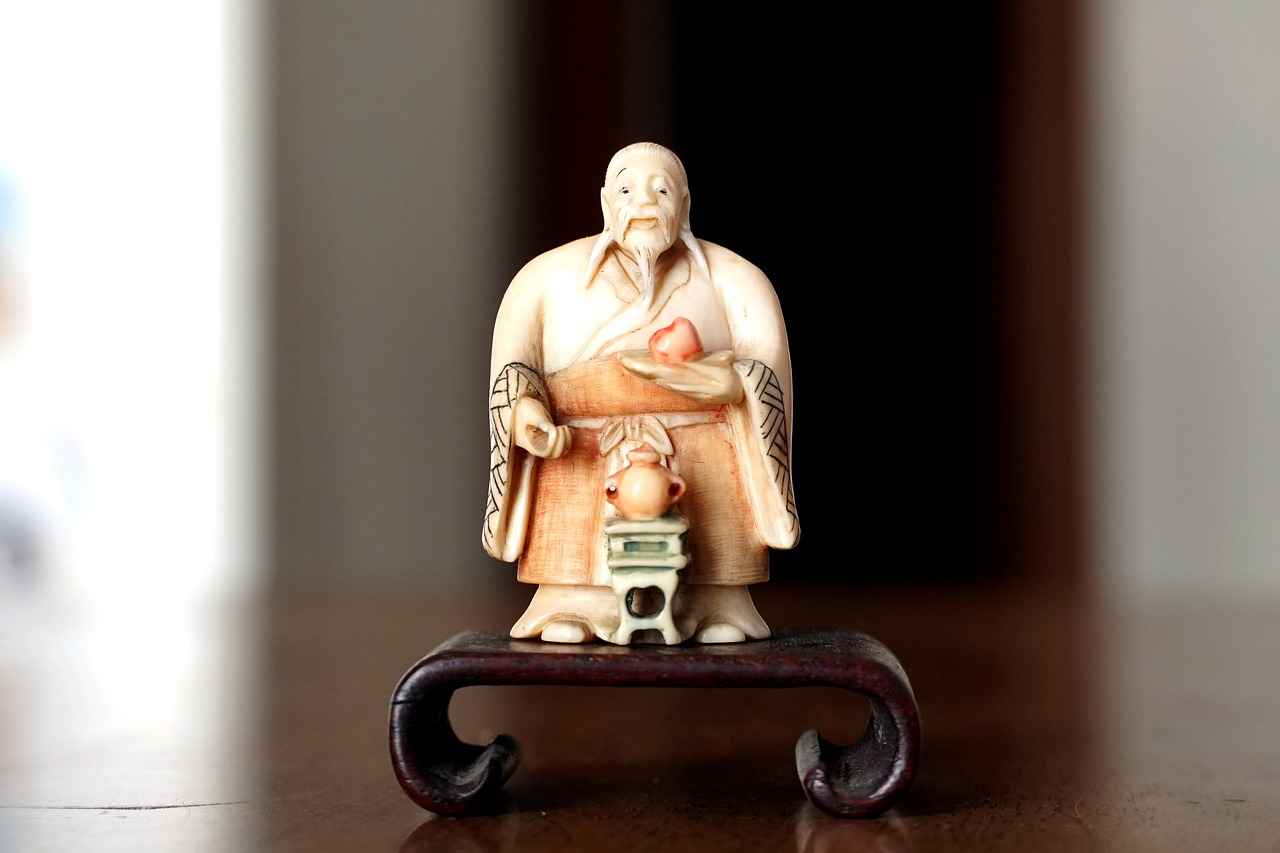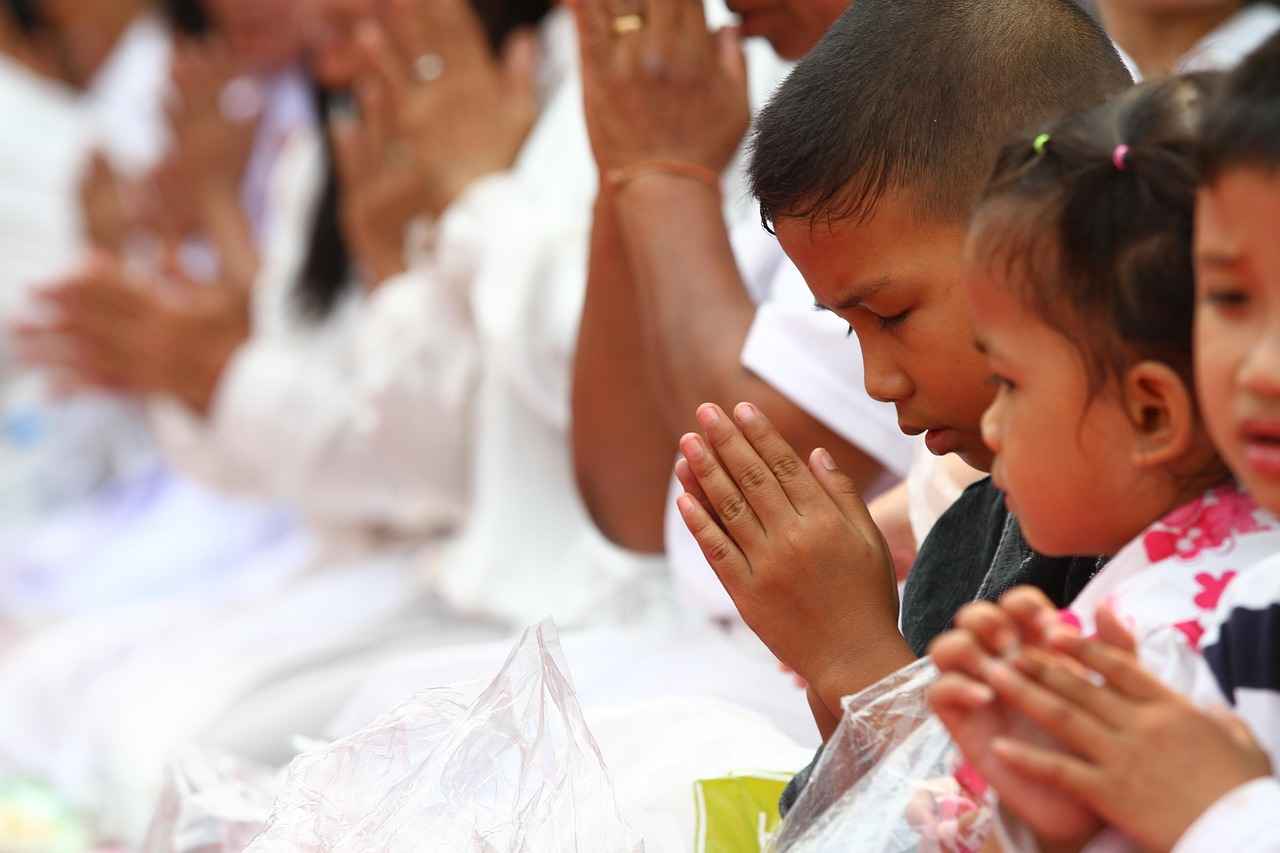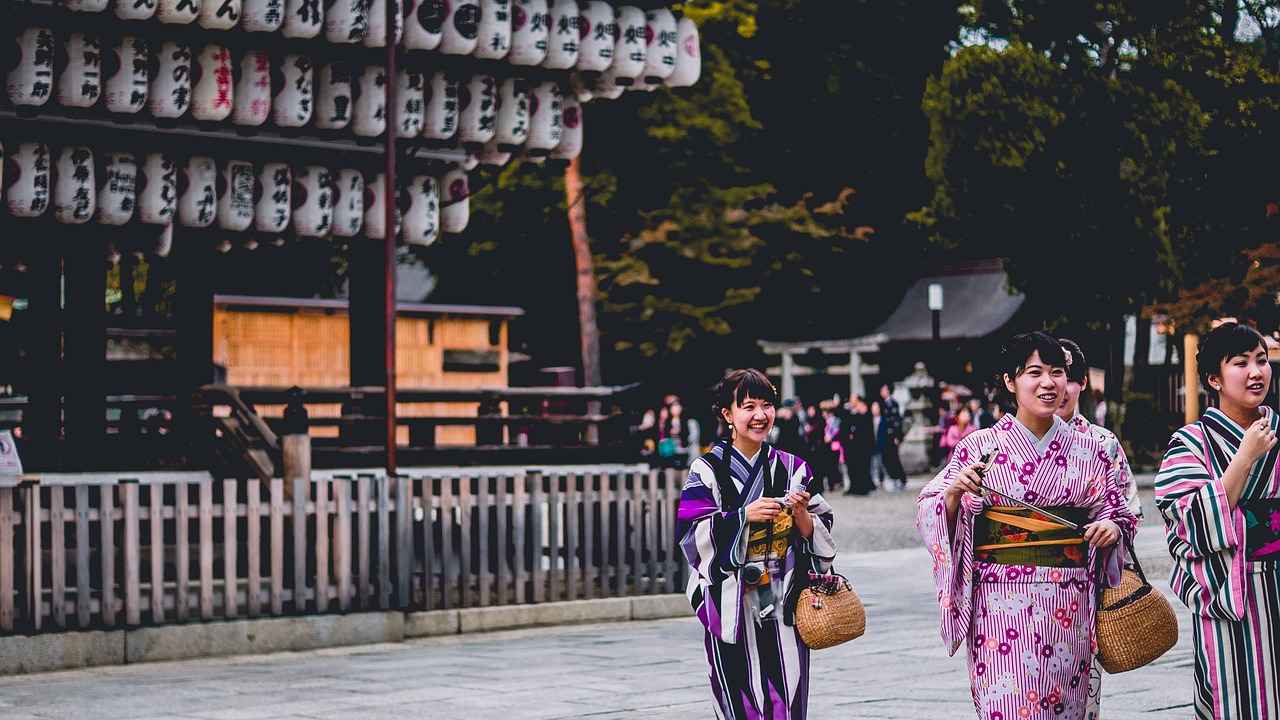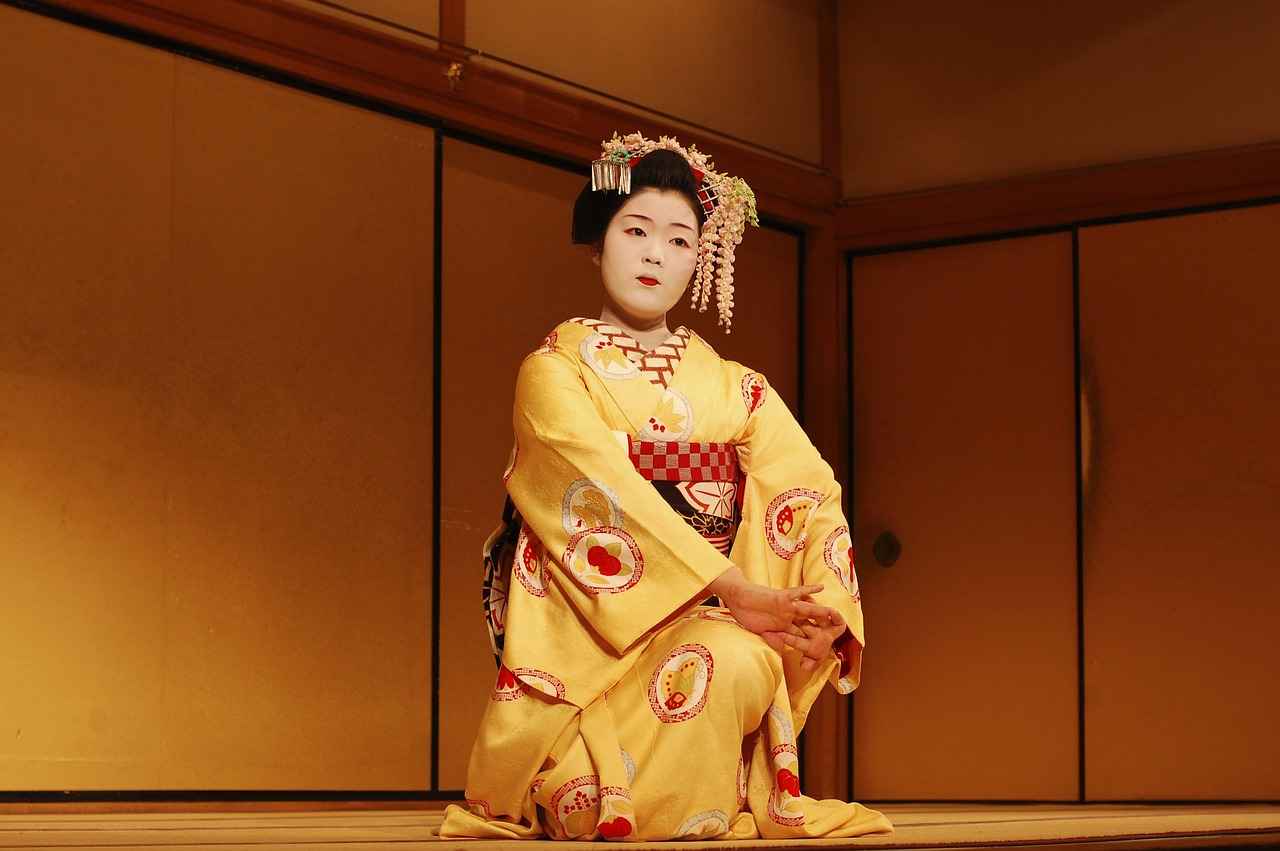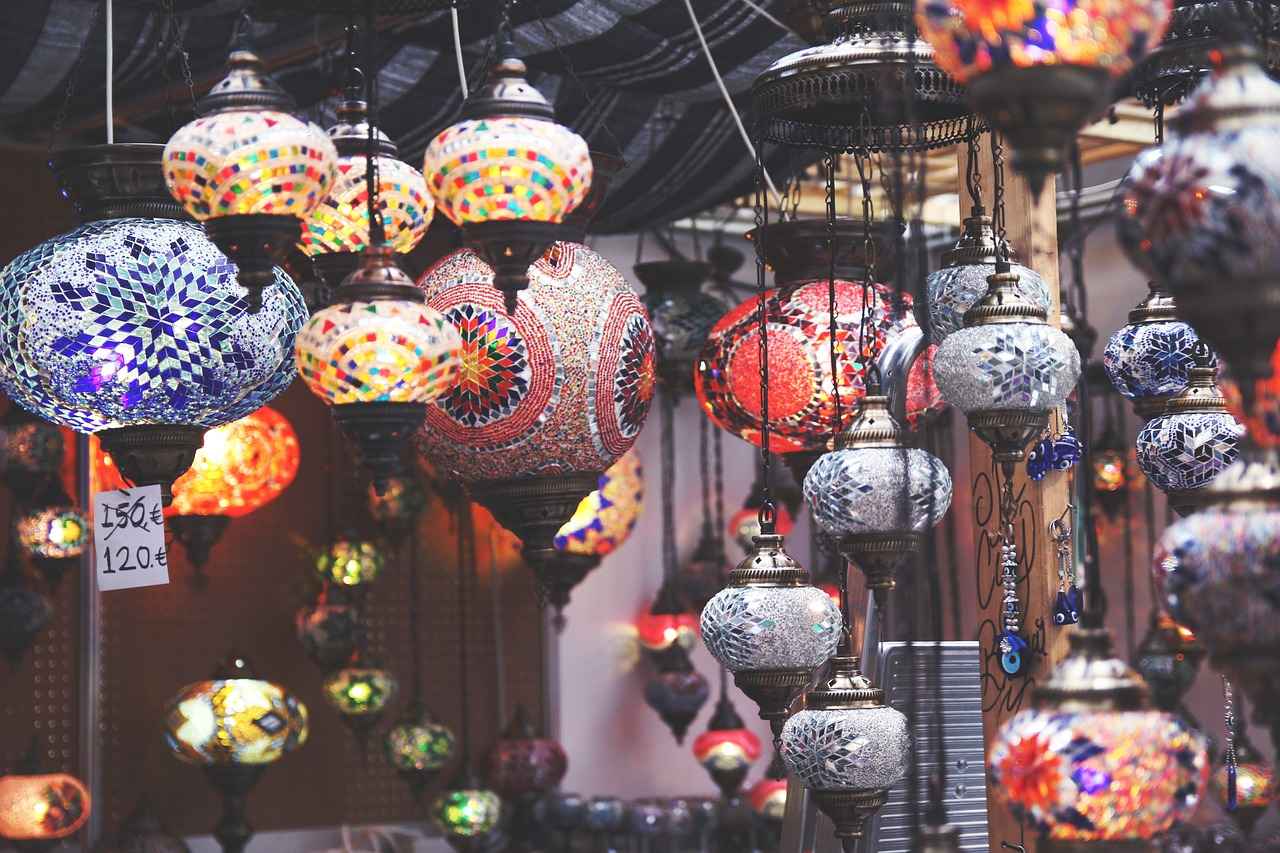In the ever-evolving world of women’s fashion, the kimono stands out as a versatile piece that effortlessly blends tradition and modernity. This unique garment, with its rich history, can be styled in numerous ways to suit various occasions, making it a must-have in any wardrobe.
Understanding the Kimono
The kimono is more than just clothing; it represents a significant part of Japanese culture. Originally worn as a formal garment, it has transformed into a popular fashion statement worldwide. Today, kimonos come in various styles and fabrics, making them accessible to everyone.
Types of Kimonos
- Traditional Kimonos: These are often made from luxurious fabrics like silk and are adorned with intricate designs.
- Modern Kimonos: Combining traditional elements with contemporary designs, these kimonos are perfect for casual wear.
- Casual Kimonos: Lightweight and often made from cotton, they are ideal for everyday outfits.
Styling Your Kimono
Integrating a kimono into your wardrobe can be both fun and stylish. Here are some practical tips:
- Casual Outfits: Pair your kimono with a simple t-shirt and jeans for a relaxed look.
- Formal Looks: Elevate your evening attire by layering a kimono over a fitted dress.
Layering Techniques
Kimonos are perfect for layering. In cooler months, wear a fitted turtleneck underneath, or during warmer seasons, opt for a light tank top. This adaptability allows you to enjoy kimonos year-round.
Accessorizing Your Kimono
Complete your look with the right accessories. A statement belt can cinch the waist, while delicate jewelry can enhance the overall elegance without overpowering the outfit.
Where to Buy Kimonos
From online retailers to local boutiques, there are countless places to find the perfect kimono. Look for stores that specialize in both traditional and modern styles to ensure a diverse selection.
Maintaining Your Kimono
To keep your kimono in pristine condition, follow care instructions carefully. Hand washing and air drying are often recommended to preserve the fabric’s quality.
Conclusion: Embracing the Kimono Style
The kimono is a timeless garment that offers endless styling possibilities. By incorporating it into your wardrobe, you can create unique looks that reflect both your personal style and a rich cultural heritage. Embrace the versatility of the kimono and let it enhance your fashion journey.
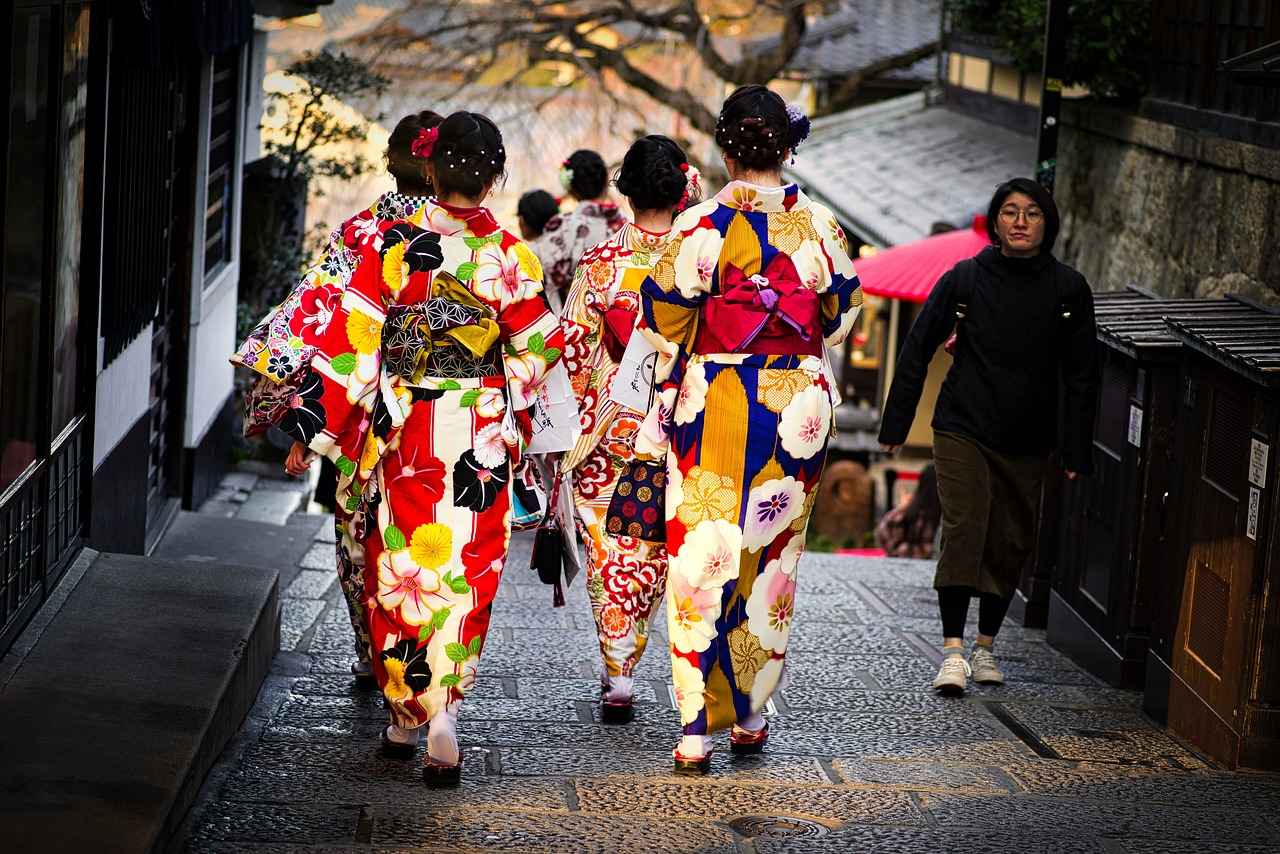
Understanding the Kimono
The kimono is a traditional Japanese garment that has a rich history and cultural significance, evolving over centuries from its origins to a contemporary fashion statement embraced worldwide. This iconic attire, characterized by its long sleeves and wrap-around design, reflects not only Japan’s artistic heritage but also its social customs and historical changes.
Historically, the kimono dates back to the Heian period (794-1185), where it was primarily worn by the nobility. The garment was made from luxurious fabrics such as silk, often adorned with intricate patterns and colors that conveyed the wearer’s status and personality. As Japan transitioned through various eras, including the Edo period (1603-1868), the kimono became more accessible to the general populace and started to symbolize different social classes, occasions, and seasons.
In modern times, the kimono has transcended its traditional roots. While it is still worn during significant cultural events such as weddings, tea ceremonies, and festivals, it has also been reimagined in contemporary fashion. Designers are now incorporating kimono elements into everyday clothing, creating a fusion of traditional aesthetics with modern silhouettes. This evolution has led to the rise of modern kimonos, which are often made from lighter materials and come in various styles, making them suitable for casual wear.
The cultural significance of the kimono extends beyond its physical form; it embodies the values of craftsmanship, respect for nature, and the importance of tradition in Japanese society. Today, as the world embraces diversity in fashion, the kimono stands as a testament to the beauty of cultural exchange, allowing individuals to express their unique style while honoring its rich heritage.
Incorporating a kimono into your wardrobe not only adds a touch of elegance but also connects you to a profound cultural narrative that has shaped fashion for centuries.

Types of Kimonos
When it comes to integrating kimonos into your wardrobe, it’s essential to understand the variety of styles available. Each type of kimono serves a unique purpose and can elevate your fashion choices in different ways. Below, we explore the various styles of kimonos, including casual, formal, and modern adaptations, to help you choose the right one for your wardrobe.
- Casual Kimonos: These are perfect for everyday wear. Made from lightweight materials, casual kimonos often feature vibrant colors and playful patterns. They can be easily paired with jeans, shorts, or casual dresses, making them a versatile addition to your wardrobe.
- Formal Kimonos: Typically made from luxurious fabrics like silk, formal kimonos are designed for special occasions. They often feature intricate designs and traditional patterns, making them ideal for weddings, ceremonies, or formal gatherings. Pairing them with elegant accessories can enhance their sophisticated look.
- Modern Adaptations: These kimonos blend traditional elements with contemporary fashion trends. They may come in various lengths and styles, such as cropped or duster kimonos, and can be styled with modern outfits, including tailored pants or chic dresses. This type allows for creative expression while maintaining the essence of the kimono.
In addition to these main categories, kimonos can also vary in terms of fabric and design patterns. Silk kimonos are often more formal, while cotton kimonos can be worn casually. Common patterns include floral motifs that reflect cultural significance and artistry, providing a rich backdrop to the garment’s overall aesthetic.
Choosing the right type of kimono depends on your personal style and the occasions you plan to attend. By understanding these styles, you can confidently incorporate kimonos into your wardrobe, making a unique fashion statement.
Traditional Kimonos
are not just garments; they are a reflection of Japan’s rich cultural heritage and artistry. These exquisite pieces of clothing have a history that dates back centuries, serving as a symbol of identity and tradition. The craftsmanship involved in creating a kimono is truly remarkable, as each piece is often handmade, showcasing intricate designs and patterns that tell a story.
The designs of traditional kimonos vary significantly, with each style suited for different occasions. For instance, the furisode, characterized by its long sleeves, is typically worn by young women during formal events such as weddings and coming-of-age ceremonies. In contrast, the yukata, a lighter cotton kimono, is often worn in summer festivals and casual settings.
Moreover, the choice of fabric plays a crucial role in the kimono’s overall appearance and feel. Traditional kimonos are often made from luxurious materials such as silk, which not only enhances their beauty but also signifies the wearer’s social status. Cotton kimonos, being more breathable, are ideal for warmer climates and casual wear.
The patterns found on kimonos are equally significant, often representing various cultural symbols. Common motifs include floral designs, which symbolize beauty and renewal, and geometric shapes, which can denote stability and harmony. Each design is meticulously crafted, reflecting the skill of the artisans who create them.
In conclusion, traditional kimonos are a beautiful amalgamation of culture, craftsmanship, and personal expression. Understanding their designs, fabrics, and the occasions they are worn can help you appreciate this timeless garment and its place in both history and modern fashion.
Fabric Choices
When it comes to traditional kimonos, the choice of fabric plays a crucial role in defining the garment’s overall look and feel. The two most common fabrics used in kimonos are silk and cotton, each bringing its own unique qualities and characteristics.
- Silk: Known for its luxurious texture and natural sheen, silk kimonos are often worn during formal occasions and ceremonies. The fabric drapes beautifully, enhancing the wearer’s silhouette and providing an elegant appearance. Additionally, silk is breathable, making it comfortable to wear in various climates. Its ability to hold vibrant colors and intricate patterns makes silk kimonos particularly striking.
- Cotton: In contrast, cotton kimonos are typically more casual and versatile. They offer a softer feel against the skin and are often favored for everyday wear. Cotton is also easier to care for, making it a practical choice for those who want a low-maintenance option. The fabric allows for a wide range of designs, from simple to elaborate, appealing to various fashion preferences.
Beyond silk and cotton, other fabrics such as linen and polyester are also used in kimono production. Linen, with its natural breathability, is ideal for summer wear, while polyester blends can offer durability and ease of care.
The fabric choice not only influences the aesthetic appeal of the kimono but also affects its functionality and comfort. Understanding these differences can help you select the perfect kimono that aligns with your personal style and the occasion.
In summary, whether you opt for the luxurious feel of silk or the practicality of cotton, the fabric of your kimono will significantly impact its overall charm and suitability for various settings.
Design Patterns
in kimonos are not merely decorative; they are a profound reflection of cultural symbolism and artistry. The intricate patterns found on kimonos often tell stories, convey emotions, and represent various elements of nature and tradition.
One of the most prevalent motifs in kimono design is the floral pattern. Flowers such as cherry blossoms, chrysanthemums, and peonies are commonly featured. Each of these flowers holds significant meaning in Japanese culture. For instance, cherry blossoms symbolize the transient nature of life, while chrysanthemums represent longevity and rejuvenation. These floral designs are typically rendered in vibrant colors, enhancing the garment’s visual appeal and cultural significance.
In addition to floral motifs, geometric patterns also play a crucial role in kimono design. These patterns can range from simple shapes to complex arrangements, often symbolizing harmony and balance. Traditional geometric designs, such as asanoha (hemp leaf) and seigaiha (blue ocean waves), reflect the natural world and the interconnectedness of life. The use of these patterns is not only aesthetically pleasing but also serves to connect the wearer to their heritage.
Moreover, the choice of colors in these patterns is equally significant. Different colors can evoke various emotions and symbolize different aspects of life. For example, red is often associated with good fortune and happiness, while blue can represent calmness and tranquility.
In conclusion, the found in kimonos are a beautiful amalgamation of artistry and cultural significance. By understanding these motifs, wearers can appreciate the rich history and meaning behind their garments, making the kimono not just a piece of clothing but a symbol of tradition.
Modern Kimonos
have emerged as a significant trend in contemporary fashion, bridging the gap between traditional garments and modern aesthetics. These versatile pieces are not just for special occasions anymore; they have become a staple in everyday wardrobes. The evolution of the kimono reflects a broader cultural shift, where fashion is increasingly about personal expression and comfort.
The rise of modern kimonos can be attributed to their adaptability. Designers have embraced the classic silhouette while incorporating contemporary fabrics and patterns. This fusion allows for a range of styles, from casual to formal, making them suitable for various occasions. Whether paired with jeans for a laid-back look or worn over a dress for a formal event, modern kimonos provide an effortless way to elevate any outfit.
Moreover, the accessibility of modern kimonos has contributed to their popularity. Available in various lengths, colors, and designs, they cater to diverse tastes and body types. This inclusivity encourages individuals to explore their personal style without the constraints of traditional fashion norms.
Another key factor in the rise of modern kimonos is their sustainability. Many designers focus on eco-friendly materials and ethical production processes, appealing to the growing consumer demand for sustainable fashion. This shift not only benefits the environment but also enhances the cultural significance of the kimono, promoting a deeper appreciation for its heritage.
In conclusion, the modern kimono is a testament to the evolution of fashion, merging tradition with contemporary style. Its versatility, accessibility, and sustainable approach make it a must-have in any wardrobe. As fashion continues to evolve, the kimono stands out as a symbol of cultural appreciation and personal expression.
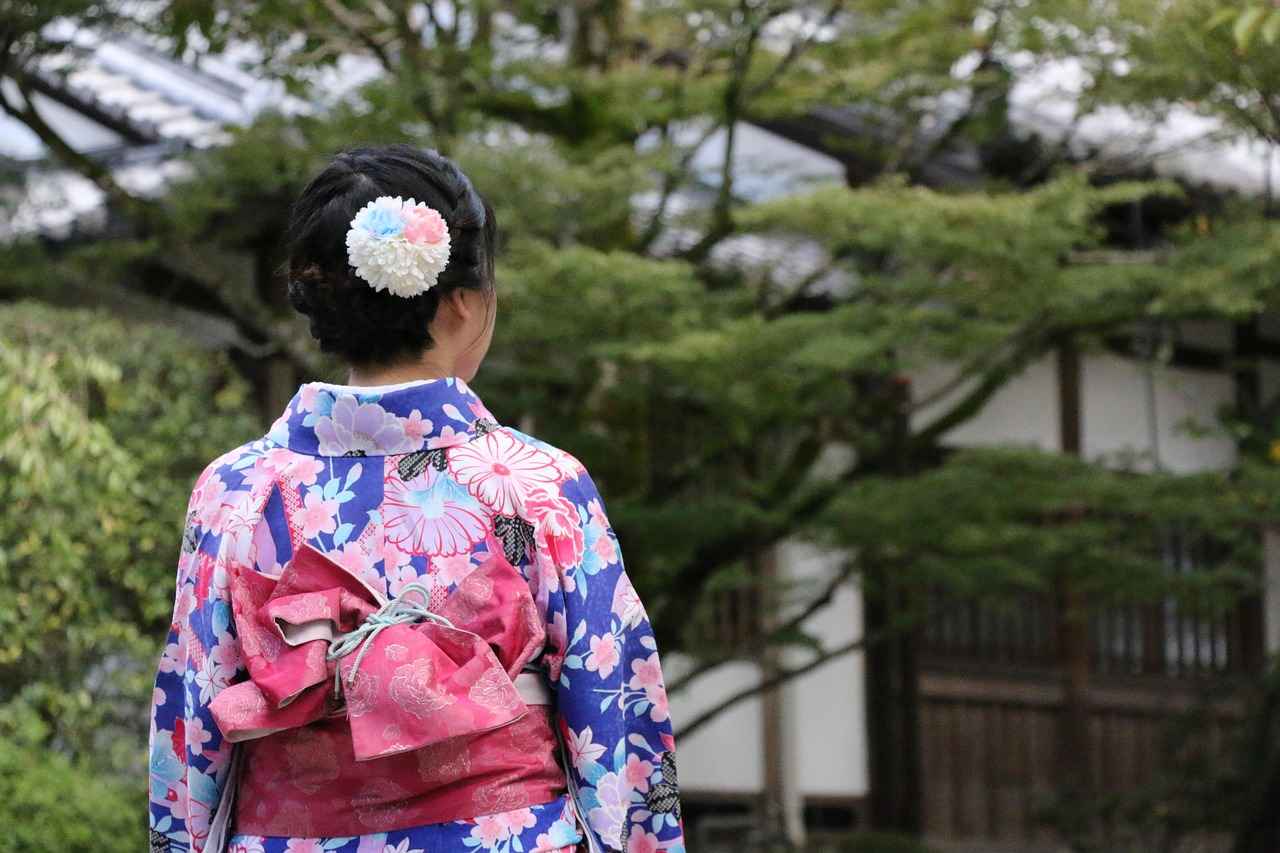
Styling Your Kimono
The kimono, a traditional Japanese garment, has made its way into modern fashion, offering a unique blend of elegance and versatility. Whether you are dressing for a casual day out or a formal event, the kimono can be styled to suit various occasions. Here are some practical tips to help you look chic while embracing this unique garment.
- Casual Outfits: For a laid-back look, consider pairing your kimono with skinny jeans or tailored shorts and a simple t-shirt. This combination not only provides comfort but also allows the kimono to be the focal point of your outfit. Opt for a lightweight, patterned kimono to add a pop of color to your ensemble.
- Formal Looks: To incorporate a kimono into formal attire, choose a more structured version made from luxurious fabrics like silk. Pair it with a little black dress or a sleek jumpsuit. A well-fitted kimono can elevate your outfit, adding layers of sophistication while maintaining comfort.
- Layering Techniques: Kimonos are perfect for layering. In cooler months, wear a fitted turtleneck underneath your kimono, paired with high-waisted trousers or a pencil skirt. This not only keeps you warm but also creates a stylish silhouette.
- Accessorizing Your Kimono: Accessories play a crucial role in styling your kimono. Consider adding a statement belt to cinch the waist, which enhances your figure and adds a modern twist. Additionally, choose minimalist jewelry to keep the focus on the kimono itself.
By following these tips, you can effortlessly style your kimono for any occasion, ensuring that you not only look chic but also feel confident in this beautiful garment.
Casual Outfits
: Kimonos are incredibly versatile garments that can transform even the simplest outfits into stylish ensembles. Pairing a kimono with casual pieces like jeans and t-shirts allows you to achieve a laid-back yet chic look that is perfect for various occasions, from brunch with friends to casual outings.
To create a balanced outfit, consider the following styling tips:
- Choose the Right Kimono: Opt for a kimono that complements your personal style. Lightweight, open-front kimonos in solid colors or subtle patterns work well for casual looks. For a bolder statement, try one with vibrant prints or unique textures.
- Layering with Basics: A simple white t-shirt or a graphic tee pairs beautifully with a kimono. This combination adds depth to your outfit without overwhelming it. For bottoms, classic blue jeans or tailored shorts can create a harmonious balance.
- Footwear Matters: Your choice of footwear can elevate your casual outfit. Sneakers or flat sandals are ideal for a relaxed vibe, while ankle boots can add a touch of edge. Ensure your shoes align with the overall aesthetic you want to achieve.
- Accessorize Wisely: Keep accessories minimal to maintain a casual feel. A pair of hoop earrings or a delicate pendant necklace can add a hint of elegance without being too flashy. A crossbody bag or a stylish backpack can complete the look.
When styling your kimono, remember that confidence is key. Embrace your unique style and experiment with different combinations. The beauty of kimonos lies in their ability to adapt to your personal fashion sense, making them a must-have in any wardrobe.
In conclusion, incorporating kimonos into your casual outfits not only enhances your style but also allows you to express your individuality. Whether you’re heading out for a casual day or running errands, kimonos can effortlessly elevate your look.
Formal Looks
Incorporating kimonos into formal attire can elevate your style while ensuring comfort and showcasing your individuality. This unique garment, rooted in rich cultural heritage, offers a fusion of elegance and modernity, making it a versatile addition to any formal wardrobe.
When considering , it’s essential to choose the right type of kimono. Opt for luxurious fabrics such as silk or satin that exude sophistication. These materials not only enhance the overall aesthetic but also provide a comfortable fit that allows for ease of movement throughout the event.
Here are some practical tips for styling kimonos in formal settings:
- Layering: Wear a fitted dress or tailored trousers underneath your kimono. This creates a streamlined silhouette, allowing the kimono to serve as a stunning outer layer.
- Color Coordination: Choose kimonos with subtle colors or elegant patterns that complement your formal attire. Neutral tones or soft pastels can be particularly striking.
- Accessorizing: Pair your kimono with statement jewelry, such as oversized earrings or a bold necklace, to add a touch of glamour without overwhelming the outfit.
- Footwear: Select chic heels or elegant flats that match the formality of your look. A classic pair of pumps can enhance your overall appearance while keeping it sophisticated.
Additionally, consider the length and cut of the kimono. Longer styles can create a dramatic effect, perfect for evening events, while shorter kimonos may be more suitable for daytime formal gatherings. The key is to ensure that the kimono complements your body shape and enhances your confidence.
In conclusion, integrating kimonos into formal attire allows you to embrace a unique fashion statement while enjoying comfort and elegance. By selecting the right fabric, colors, and accessories, you can create a memorable ensemble that reflects your personal style.

Layering Techniques
can transform your wardrobe, especially when incorporating the elegant and versatile kimono. This traditional garment not only adds a unique flair to your outfits but also serves as a practical piece for transitioning between seasons. Here, we explore effective layering techniques that will enhance your style and comfort.
One of the key benefits of kimonos is their adaptability. As the weather changes, you can easily modify your look by layering different pieces. For example, during the cooler months, consider wearing a long-sleeve top or a lightweight turtleneck under your kimono. This combination not only keeps you warm but also adds depth to your outfit. You can pair this with fitted jeans or leggings for a balanced silhouette.
In warmer seasons, kimonos can be worn over light dresses or tank tops. This creates a breezy, relaxed look while providing just enough coverage. Opt for kimonos made from breathable fabrics like cotton or rayon to ensure comfort throughout the day. Accessorizing your kimono with a wide-brimmed hat or statement jewelry can elevate the entire ensemble.
To further enhance your layering game, consider the color palette and patterns. Choose kimonos with bold prints or vibrant colors to make a statement. Layer them over neutral tones to allow the kimono to stand out. Alternatively, a subtle patterned kimono can add interest to a monochromatic outfit, making it visually appealing.
Lastly, don’t forget about the importance of proportions. When layering, ensure that the lengths of your garments complement each other. A longer kimono looks stunning over shorter tops, while a cropped kimono pairs well with high-waisted bottoms. Experimenting with different lengths can lead to exciting new looks.
In conclusion, mastering the art of layering with kimonos allows you to embrace your personal style while adapting to seasonal changes. By mixing and matching various pieces, you can create outfits that are not only fashionable but also functional.
Seasonal Adaptations
Kimonos are not just beautiful garments; they are also incredibly versatile, allowing for that cater to both warmth and comfort throughout the year. Understanding how to layer your kimono can transform your outfit, making it suitable for any season.
During the spring and summer months, kimonos can be worn as lightweight cover-ups. Opt for kimonos made from breathable fabrics like cotton or linen. Pairing a light kimono with a simple tank top and shorts can create a chic, airy look perfect for warm weather. Additionally, consider wearing it open over a sundress to add a touch of elegance while keeping cool.
As the fall approaches, layering becomes essential. You can incorporate long-sleeve tops or turtlenecks underneath your kimono. This not only provides added warmth but also creates a stylish contrast between the layers. Choose kimonos with richer colors or fall-inspired patterns to resonate with the changing season.
In the winter months, kimonos can still be a part of your wardrobe by layering them over thicker sweaters or using them as a statement piece over a long coat. Look for kimonos made from heavier materials, such as wool blends, to keep you warm. Adding a belt can also help define your waist and maintain a polished silhouette.
Finally, accessorizing plays a crucial role in seasonal adaptations. In warmer months, you can keep accessories light and airy, while in colder months, consider adding scarves, hats, or even gloves to complement your kimono. This not only enhances the overall look but also adds functionality to your outfit.
By understanding these layering techniques, you can effortlessly adapt your kimono for any season, ensuring you remain stylish and comfortable all year round.
Accessorizing Your Kimono
When it comes to enhancing your kimono look, the right accessories can make all the difference. The goal is to complement the beauty of your kimono without overwhelming its intricate designs and cultural significance. Here are some essential tips on how to accessorize effectively:
- Belts and Sashes: A wide belt or a decorative sash can cinch your waist and create a flattering silhouette. Opt for colors that either contrast or harmonize with your kimono’s patterns.
- Jewelry: Minimalistic jewelry works best with kimonos. Consider delicate earrings or a simple pendant necklace to keep the focus on the garment. Avoid chunky pieces that may clash with the kimono’s aesthetic.
- Footwear: Choose stylish yet comfortable footwear. Sandals or low-heeled shoes can maintain the outfit’s elegance. If you’re wearing a more casual kimono, chic sneakers can also be a great choice.
- Bags: A small clutch or a crossbody bag adds functionality without taking away from the outfit. Look for bags in solid colors or subtle patterns that complement your kimono.
- Hats and Hair Accessories: A wide-brimmed hat can add a touch of sophistication, while hairpins or decorative combs can enhance your hairstyle without overshadowing the kimono.
Remember, the key to accessorizing your kimono is to keep it simple and elegant. Choose pieces that resonate with your personal style while respecting the cultural heritage of the kimono. By doing this, you can create a balanced look that showcases the beauty of both the kimono and the accessories.
Incorporating these accessories will not only enhance your overall appearance but also allow you to express your individuality while celebrating the traditional essence of the kimono.

Where to Buy Kimonos
When it comes to finding the perfect kimono, the options are abundant. Whether you prefer shopping online or exploring local boutiques, there is a wide selection available to suit your style and budget. Here’s a comprehensive guide to help you navigate your shopping journey.
- Online Retailers: The internet offers a plethora of options for purchasing kimonos. Popular online platforms like Amazon, Etsy, and Zalando feature a vast array of kimonos in various styles, fabrics, and price ranges. You can easily compare prices and styles from the comfort of your home.
- Specialized Boutiques: For a more personalized shopping experience, consider visiting local boutiques that specialize in Asian or contemporary fashion. These shops often carry unique pieces that reflect cultural heritage and craftsmanship, providing you with options that you won’t find in mainstream stores.
- Department Stores: Many department stores have expanded their offerings to include kimonos as part of their women’s clothing lines. Stores like Macy’s or Nordstrom frequently update their collections, making it easy to find fashionable kimonos that fit various occasions.
- Thrift and Vintage Shops: If you’re on the hunt for something truly unique, explore thrift stores and vintage shops. You may stumble upon authentic vintage kimonos that carry their own stories and charm, often at a fraction of the price of new garments.
- Custom Options: For those who want a kimono tailored to their specifications, consider reaching out to local seamstresses or designers who can create a custom piece. This option allows you to choose your own fabric, design, and fit, ensuring your kimono is one-of-a-kind.
In conclusion, whether you prefer the convenience of online shopping or the tactile experience of browsing through local boutiques, there are countless avenues to explore when searching for the perfect kimono. Embrace the journey and enjoy the process of finding a piece that resonates with your personal style.

Maintaining Your Kimono
To ensure your kimono remains in pristine condition for years to come, it’s essential to adopt proper care methods. This traditional garment, steeped in cultural significance, requires thoughtful maintenance to preserve its vibrancy and longevity. Below are key tips to help you keep your kimono looking its best:
- Regular Cleaning: Depending on how often you wear your kimono, you should clean it regularly. For light stains, a gentle spot cleaning with a damp cloth can suffice. For deeper cleaning, consider professional dry cleaning to avoid damaging the fabric.
- Storage: Store your kimono in a cool, dry place, away from direct sunlight. Use a breathable garment bag or a cotton sheet to protect it from dust and moisture. Avoid hanging it on plastic hangers, as this can distort its shape.
- Ironing: If your kimono becomes wrinkled, use a low-heat iron or a steamer. Always place a cloth between the iron and the fabric to prevent direct contact, which can cause burns or damage.
- Handling: When putting on or taking off your kimono, do so gently. Avoid pulling or tugging on the fabric, as this can lead to tears or stretching.
- Repairs: If you notice any wear and tear, such as loose threads or small tears, address them promptly. Sewing small repairs yourself or taking them to a professional can prevent further damage.
By following these essential care tips, you can prolong the lifespan of your kimono while ensuring it retains its stunning appearance. Embrace the beauty of this traditional garment with the knowledge that proper maintenance will keep it a cherished part of your wardrobe for many years.
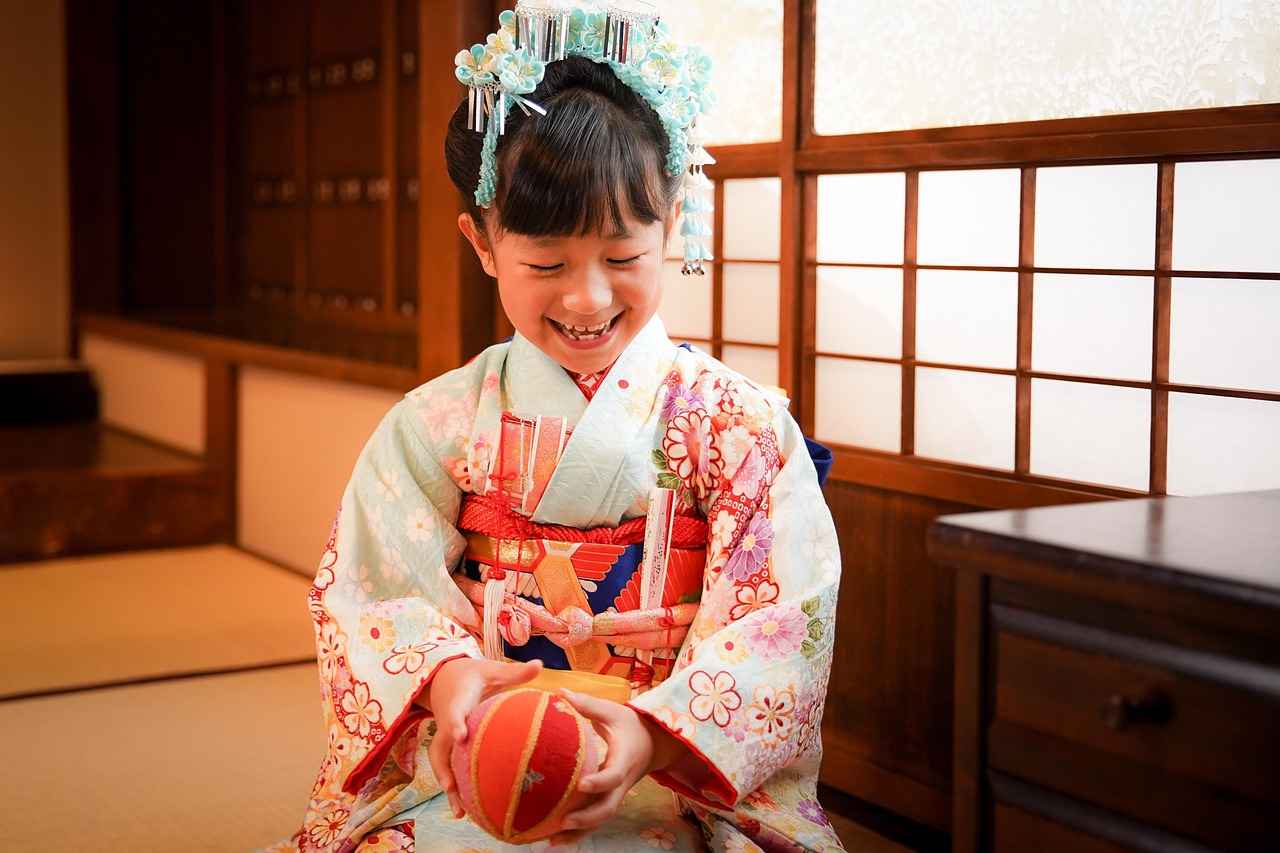
Conclusion: Embracing the Kimono Style
Incorporating a kimono into your wardrobe offers a multitude of benefits that can elevate your fashion game to new heights. This versatile garment, with its rich history and cultural significance, serves as a unique fashion statement that transcends trends and seasons.
- Versatility: Kimonos can be styled in various ways, making them suitable for both casual and formal occasions. Whether you’re dressing up for a night out or going for a relaxed brunch, a kimono can effortlessly enhance your look.
- Comfort: Made from breathable fabrics like cotton and silk, kimonos provide a comfortable fit that allows for ease of movement. This makes them an ideal choice for long days when you want to look stylish without sacrificing comfort.
- Layering Potential: Kimonos are perfect for layering, allowing you to adapt your outfit for different seasons. Pairing a kimono with a simple top and jeans can add depth to your look while keeping you warm during cooler months.
- Unique Aesthetic: With a wide range of colors, patterns, and designs, kimonos offer a unique aesthetic that can set you apart from the crowd. From floral prints to geometric designs, there’s a kimono for every personal style.
- Cultural Appreciation: Wearing a kimono also allows you to appreciate and celebrate its cultural heritage. By embracing this traditional garment, you contribute to its ongoing evolution in the fashion world.
In conclusion, the kimono is not just a piece of clothing; it is a statement of style, culture, and individuality. By incorporating kimonos into your wardrobe, you embrace their versatility and charm, making them a must-have for any fashion enthusiast.
Frequently Asked Questions
- What is a kimono?
A kimono is a traditional Japanese garment characterized by its long sleeves and wrap-around design. It has evolved over the years, becoming a versatile piece in modern fashion.
- How can I style a kimono for casual wear?
For a casual look, pair your kimono with a simple t-shirt and jeans. Add some comfy sneakers or sandals, and you’re ready to go! Think of it as throwing on a chic blanket that enhances your outfit.
- Can I wear a kimono to formal events?
Absolutely! Kimonos can be styled for formal occasions by choosing elegant fabrics like silk and pairing them with tailored trousers or a sleek dress. It’s like adding a touch of cultural flair to your sophisticated look.
- What types of fabrics are used in kimonos?
Kimonos are made from various fabrics, including silk, cotton, and synthetic blends. Silk kimonos are luxurious and perfect for formal wear, while cotton kimonos offer comfort for everyday use.
- How do I care for my kimono?
To keep your kimono looking its best, hand wash it in cold water and hang it to dry. Avoid direct sunlight to prevent fading. Think of it as nurturing a delicate flower; a little care goes a long way!
